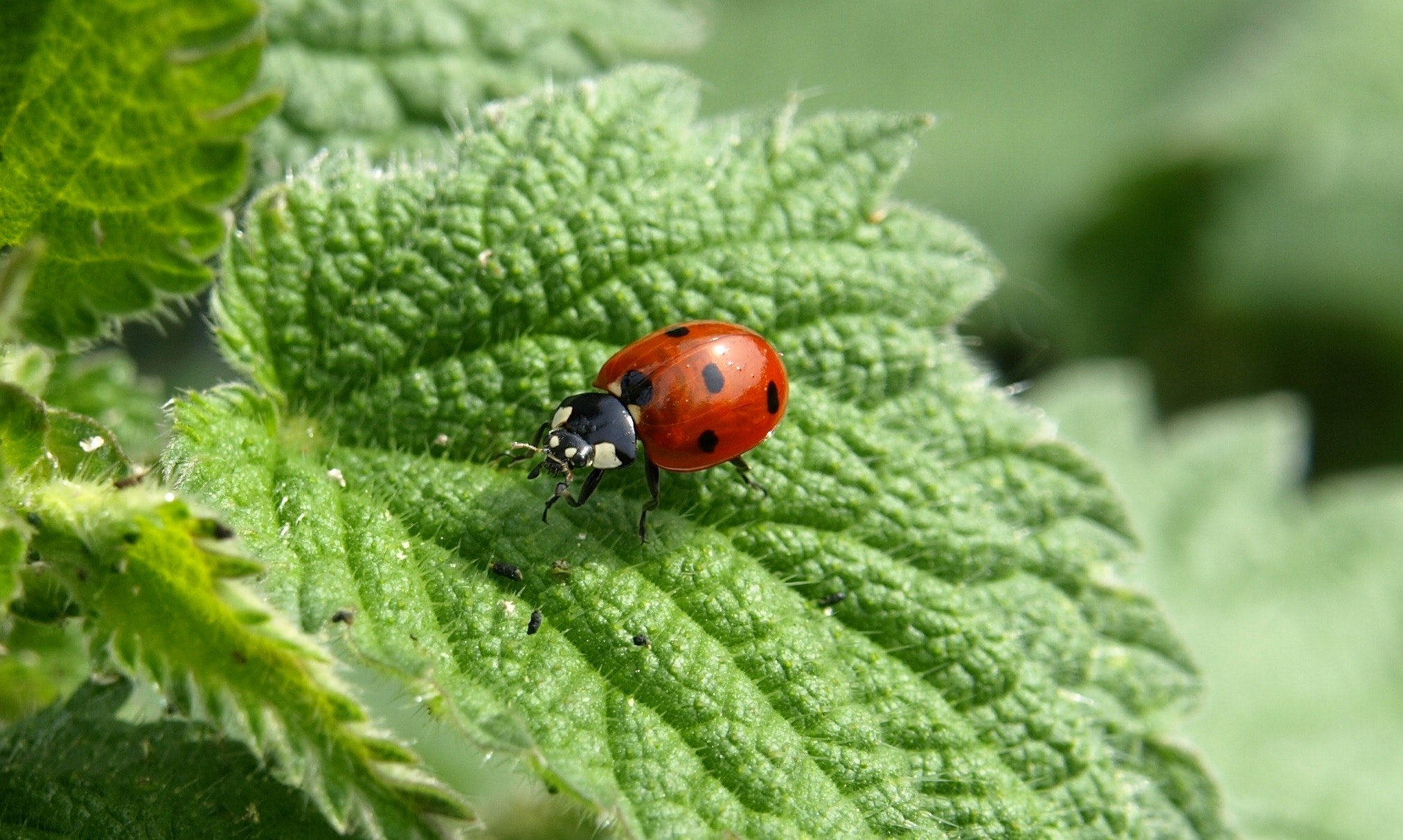
Each year in late spring my Big Leaf Lupine emerges with beautiful foliage, and then come those amazing spikes of purple flowers. I love it. It doesn’t take long, however, for the aphids to start enjoying the plant. They enjoy it so much that the blooms are soon destroyed, and I’m disappointed that it was a shorter display than I wanted.
I think every gardener has experience with aphids on a beloved plant, or several of them. The vegetable garden is an especially attractive home for these critters. Luckily, they also happen to be a plentiful food source for the insects that we want to invite into our gardens, the most iconic of which is definitely the lady bug.
It’s been standard practice for a long time to simply purchase these colorful soldiers from the plant shop and release them into the garden. Unfortunately, this approach comes along with some potentially negative consequences.
There are a few issues with releasing store-bought bugs. First is the harvesting. Huge numbers of them are taken from their natural habitats, impacting that habitat. Another problem is that the ones bought at the store have probably come from some other bio-region. Releasing them in our gardens puts our native populations at risk of unfamiliar diseases.
It’s also totally possible, even likely, that released lady bugs will be eaten by predators or just leave your garden to find a better home before they’ve solved your aphid problem. Since we have an abundance of native lady bugs, if our gardens were a suitable habitat for them, they’d likely already be there. Lady bugs need more than just aphids to eat. They also need shelter from predators and a reliable source of water. Providing these elements in your garden can help attract lady bugs and lots of other beneficial insects.
Follow this link for more details from the Xerces Society about all this.
The first year I noticed aphids gorging on my lupine plant I spent time each day, usually both morning and evening shaking them off and spraying them off with water. My 4 year old even got interested in helping. But it didn’t do much good. It may have prolonged the blooms for a while, or maybe not. At some point in the process, lady bugs found the food source and started dining. I wish I could say that they took care of the problem, but they really didn’t. Each year, the lupine blooms, the aphids come, the lady bugs come, and the plant ultimately succumbs.
What has changed is my involvement. I no longer spend time trying to thwart the aphids. Instead, I’ve made peace with them, and every one involved seems to get some benefits. I get to enjoy the blooms for a while, as do the pollinators. The aphids get to enjoy and meal, and so do the lady bugs. The lupine continues to survive and produce those stunning flowers so I believe it’s also getting what it needs.
It can be hard to stand back and watch as a plant that we like is apparently suffering, but really, if we can put our own needs a little further down on the list of importance these things can really find a way of balancing themselves out.
